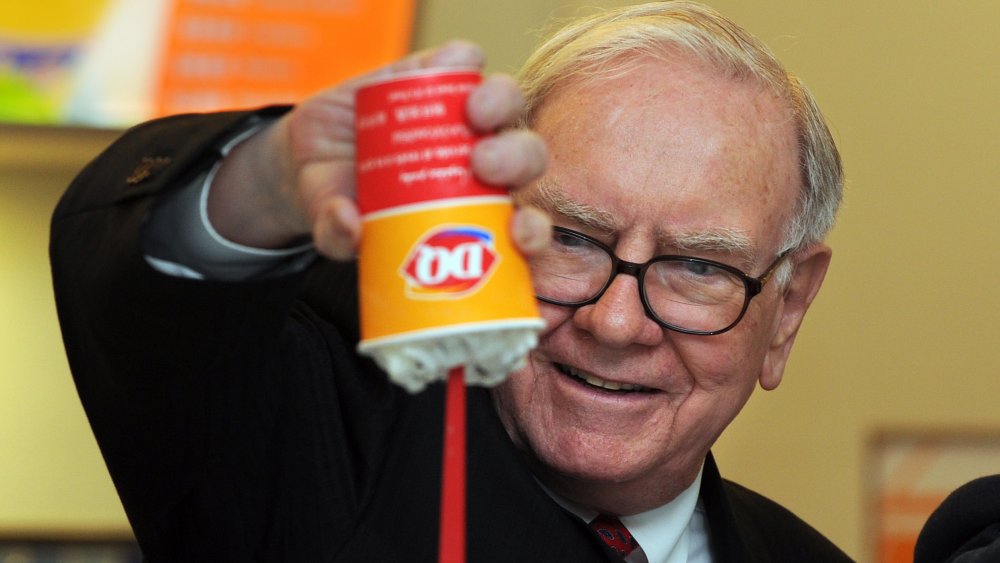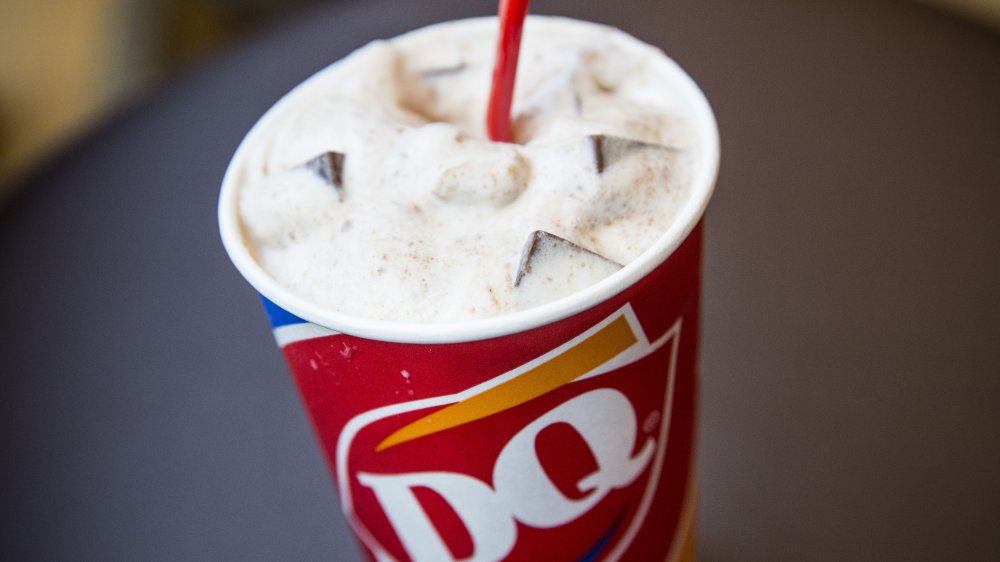The Real Reason Dairy Queen Blizzards Don't Fall
Dairy Queen Blizzards are most likely famous for one characteristic above the rest: the creamy desserts are thick enough to be served completely upside down with the handle of the spoon pointing directly to the floor. Whether you love the soft serve packed with fruit, candy, or baked goods, it's undoubtedly a decadent treat. What you might not know, however, is that there are quite a few secrets and lesser-known facts surrounding the chain's dessert. First up and most important — not all locations honor the promise that your next Blizzard will be free if it isn't served up-side-down (via Food and Wine).
As you dig your spoon in for the next bite of a delightfully chunky, creamy Blizzard, you might find yourself wondering how the fast-food chain can even propose such an idea of serving food–that could, in theory, hit the floor in the blink of an eye with such confidence. What started as the annoying whims of a 14-year-old boy in St. Louis eventually led a local sandwich and malt stand owner to pitch Dairy Queen the idea of a treat thick enough to withstand gravity. Since Dairy Queen started making these extra-thick frozen treats in the 1980s, the treat has since become a menu staple (via MentalFloss). It takes a few tricks, however, to make sure Blizzards are properly thick.
Inside the gravity-defying Dairy Queen Blizzards
One of several reasons why Dairy Queen Blizzards have the anti-gravity capacity that they do is because of their makeup and texture. It isn't technically ice cream after all, but "ice milk," thanks to the amount of butterfat content. The FDA requires at least 10 percent butterfat content for something to be called ice cream, but the chain's soft serve only has 5 percent butterfat.
This quality of the soft serve, along with the air that is added in, gives it a luscious texture, though it does mean your Blizzard will melt a lot faster than regular ice cream. The added air and lower butterfat content also mean that the frozen treat has the perfect weight ratio and viscosity (or pourability) to keep it in the cup (via Spoon University).
Temperature is also a factor in the Blizzard upside-down test
Another factor is the very specific temperature that Dairy Queen stores its soft serve. At 23 degrees Fahrenheit, the storage temperature is considerably warmer than the storing temperature for regular, hard ice cream, which is zero degrees Fahrenheit. Storing it at a warmer (albeit still cold) temperature allows the "ice milk" or soft serve to properly move when it is filling a cup. Once the toppings are added to the base soft serve, the entire thing is mixed again to incorporate all of those toppings–adding more air in and making it thick enough to withstand the upside down test.
The next time you order a Blizzard, make sure it's mixed well until the soft serve is light and fluffy, or there could be a chance that it does end up on the floor.


